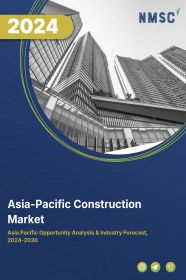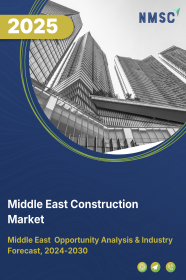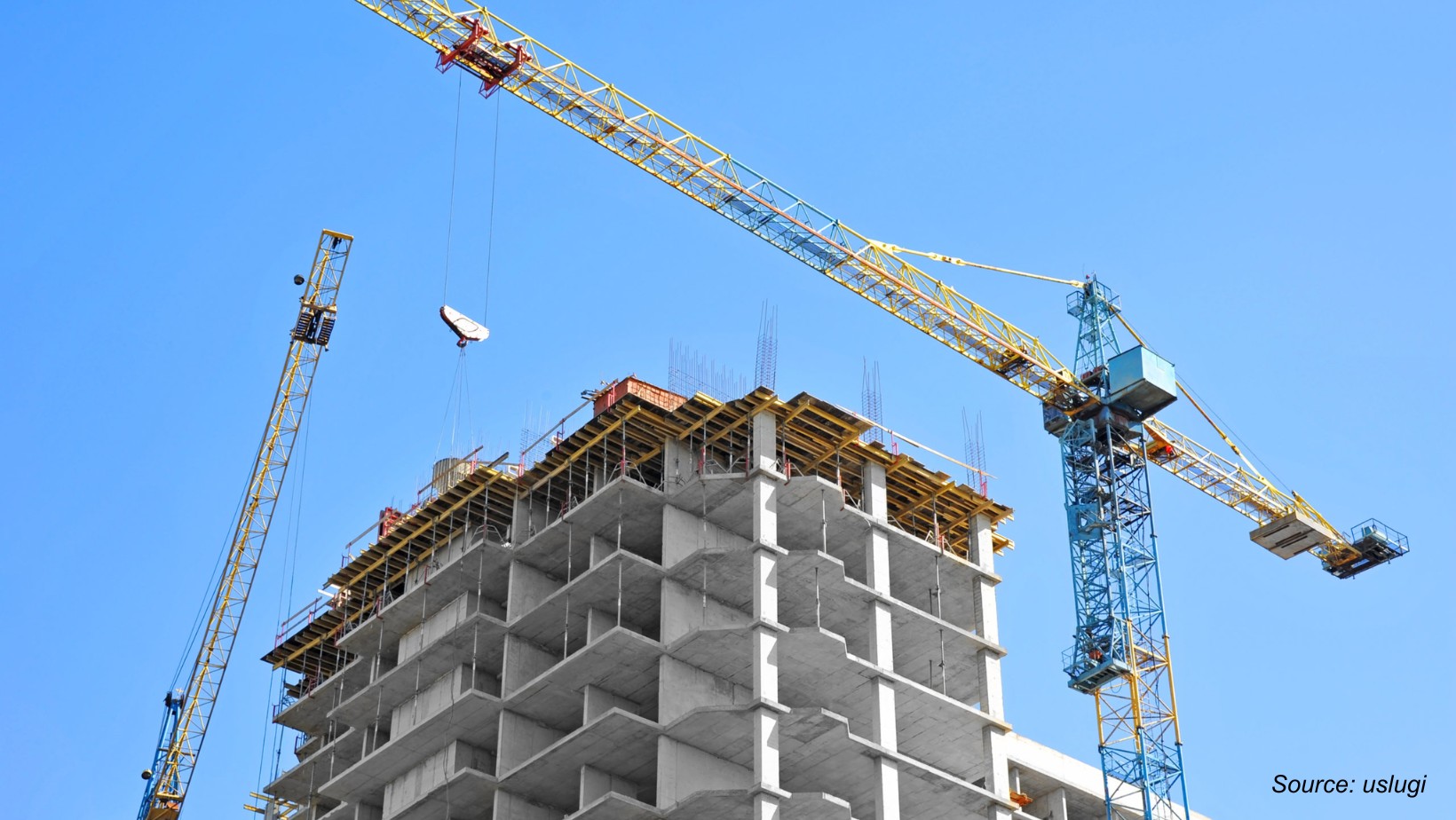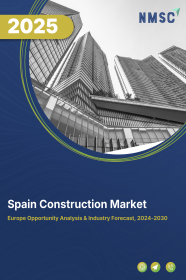
Spain Construction Market by Type (Renovation, and New Construction), by Sector (Real Estate, Infrastructure, and Industrial), by Construction Method (Traditional, Prefabricated/Modular, 3D-Printed, and Green/Sustainable), and by Type of Contractor (Large Contractor, Medium Contractor, and Small Contractor) – Industry Trends and Forecast, 2025–2030
Industry: Construction & Manufacturing | Publish Date: 05-Jul-2025 | No of Pages: 86 | No. of Tables: 117 | No. of Figures: 62 | Format: PDF | Report Code : CM2201
Spain Construction Industry Overview
The Spain Construction Market size was valued at USD 125.02 billion in 2024, and is projected to grow to USD 138.86 billion by 2025. Additionally, the industry is expected to continue its growth trajectory, reaching USD 176.45 billion by 2030, with a CAGR of 4.9% from 2025 to 2030.
The market is experiencing robust growth, driven by major large-scale projects such as the AQ-BCN1 Data Center, Camp Nou Stadium renovation, and Renopool Solar Park, which enhance the country's infrastructure, digital, and renewable energy capabilities. Increasing investments, particularly in the energy and transportation sectors, are fueling market expansion, with significant backing from the EU's recovery funds.
However, the market faces challenges from regulatory complexities, including lengthy permit processes and bureaucratic inefficiencies, which can delay projects and increase costs. Despite these hurdles, the growing adoption of Building Information Modeling (BIM) and the integration of AI, IoT, and cloud technologies offer substantial opportunities for improved project execution, efficiency, and collaboration, driving further growth in Spain construction market trends.
Strengthening Economic Stability And Investment Sentiment Revitalize Spain’s Construction Sector
Spain’s construction sector is regaining momentum in 2025, backed by robust macroeconomic indicators and rising investor confidence. The market is projected to grow at approximately 3.9% this year, reaching around €83.5 billion in value. This growth is fueled by continued inflows from the EU’s Recovery and Resilience Facility (RRF), favorable financing conditions, and revived domestic demand across both residential and commercial construction. In April 2025 alone, construction output surged by nearly 14.7% year-over-year, reflecting renewed private and public sector activity. Notably, investment is flowing into housing, logistics, industrial parks, and digital infrastructure, while previously stalled projects are resuming, driven by policy stability and urban regeneration incentives.
Urban Population Growth and Evolving Cityscapes Accelerate Demand for New Developments
Over 80% of Spain’s population now resides in urban areas, with Madrid, Barcelona, Seville, and Valencia seeing sustained population inflows. This urban concentration is intensifying the need for new housing, better transport systems, and resilient public infrastructure. In response, regional and municipal governments are launching ambitious city-scale development programs emphasizing transit-oriented planning, green public spaces, and mixed-use smart zones. Affordable housing and urban infill developments are especially prioritized, supported by both national housing strategies and EU-backed financing. As developers cater to growing and densifying cities, demand for intelligent, sustainable construction continues to drive innovation across materials, design, and land-use planning.
Regulatory Hurdles And Permitting Complexities Pose Delays To Project Execution
Despite strong demand and financial support, Spain’s construction market is frequently slowed by administrative and legal bottlenecks. The decentralized regulatory environment—where Spain’s 17 autonomous communities each govern planning, permitting, and zoning independently—leads to inconsistencies and delays across regions. This complexity results in prolonged permitting timelines, often extending over a year for medium to large-scale projects. Moreover, legal uncertainty in certain jurisdictions, especially related to environmental clearances and land-use changes, can significantly delay investments. These bureaucratic challenges, combined with labor shortages and rising material costs, remain critical barriers for both domestic and foreign developers aiming for timely execution.
Digital Transformation and Bim Adoption Present a Pathway to Smarter, more Sustainable Construction
Spain is undergoing a digital shift in construction, led by rapid adoption of Building Information Modeling (BIM), which became mandatory for all public projects in 2024. Over 2,600 public contracts worth €8.3 billion have been tendered with BIM requirements to date, signaling institutional commitment to data-driven planning and project transparency. Additionally, the industry is embracing advanced technologies such as digital twins, IoT-based monitoring, prefabrication, and modular housing. A flagship example is Spain’s €1.3 billion investment in industrialized affordable housing, which aims to deliver 15,000 modular units annually. These developments are not only improving efficiency and sustainability but also opening up new competitive advantages for tech-forward construction firms operating in both urban renewal and green infrastructure domains.
Competitive Landscape
The key players operating in the Spain construction industry include Acciona, S.A., Grupo ACS S.A., FCC Group, Ferrovial S.E., OHLA, Grupo Empresarial San, VINCI Construction, Elecnor Group, TSK ELECTRONICA Y ELECTRICIDAD SA, Tecnicas Reunidas S. A., CLERHP, Construcciones Y Reformas J.M. Luquero, Proyectos Y Obras ACR, Aldesa, DRAGADOS, and others.
Spain Construction Market Key Segments
By Type
-
Renovation
-
New Construction
By Sector
-
Real Estate
-
Residential
-
Affordable
-
Luxury
-
-
Commercial
-
Retail Buildings
-
Office Buildings
-
Hospitality
-
Healthcare Facilities
-
Educational Institutes
-
Entertainment Ventures
-
-
-
Infrastructure
-
Transportation
-
Airport
-
Port
-
Rail
-
Road
-
-
Water and Wastewater
-
Energy
-
Telecommunication
-
-
Industrial
-
Manufacturing Plant
-
Warehouses
-
Power Plants
-
Oil Refineries
-
Chemical Plants
-
By Construction Method
-
Traditional Construction
-
Prefabricated/Modular Construction
-
3D-Printed Construction
-
Green/Sustainable Construction
By Type of Contractor
-
Large Contractor
-
Medium Contractor
-
Small Contractor
Key Players
-
Acciona, S.A.
-
Grupo ACS S.A.
-
FCC Group
-
Ferrovial S.E.
-
OHLA
-
Grupo Empresarial San
-
VINCI Construction
-
Elecnor Group
-
TSK ELECTRONICA Y ELECTRICIDAD SA
-
Tecnicas Reunidas S. A.
-
CLERHP.
-
Construcciones Y Reformas J.M. Luquero
-
Proyectos Y Obras ACR
-
Aldesa
-
DRAGADOS
REPORT SCOPE AND SEGMENTATION:
|
Parameters |
Details |
|
Market Size in 2024 |
USD 125.02 Billion |
|
Revenue Forecast in 2030 |
USD 176.45 Billion |
|
Growth Rate |
CAGR of 4.9% from 2025 to 2030 |
|
Analysis Period |
2024-2030 |
|
Base Year Considered |
2024 |
|
Forecast Period |
2025–2030 |
|
Market Size Estimation |
Billion (USD) |
|
Growth Factors |
|
|
Companies Profiled |
15 |
|
Market Share |
Available for 10 companies |
|
Customization Scope |
Free customization (equivalent up to 80 working hours of analysts) after purchase. Addition or alteration to country, regional, and segment scope. |
|
Pricing and Purchase Options |
Avail customized purchase options to meet your exact research needs. |





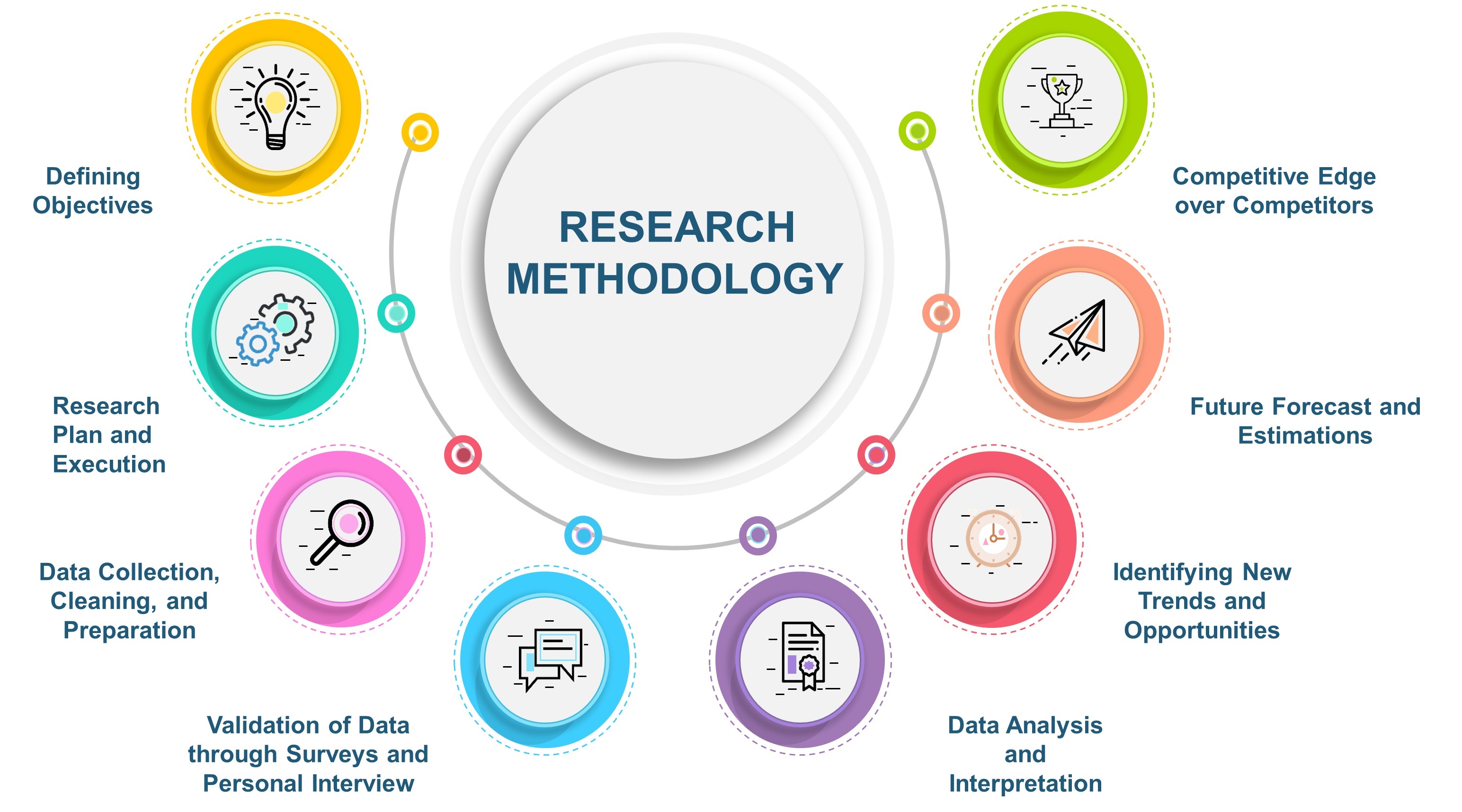
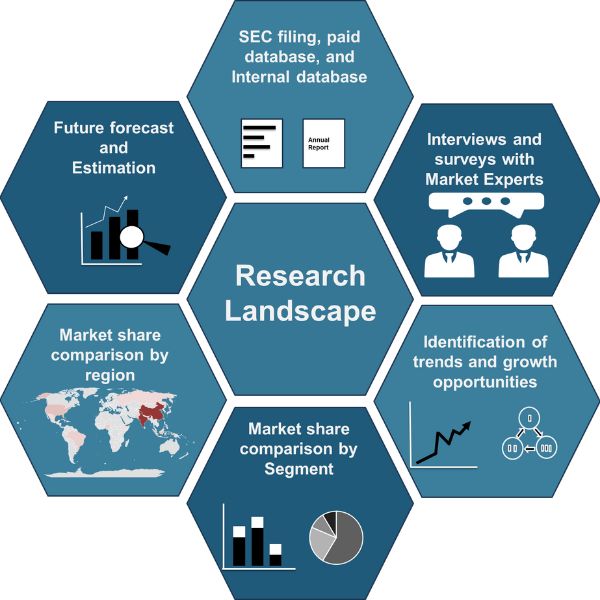
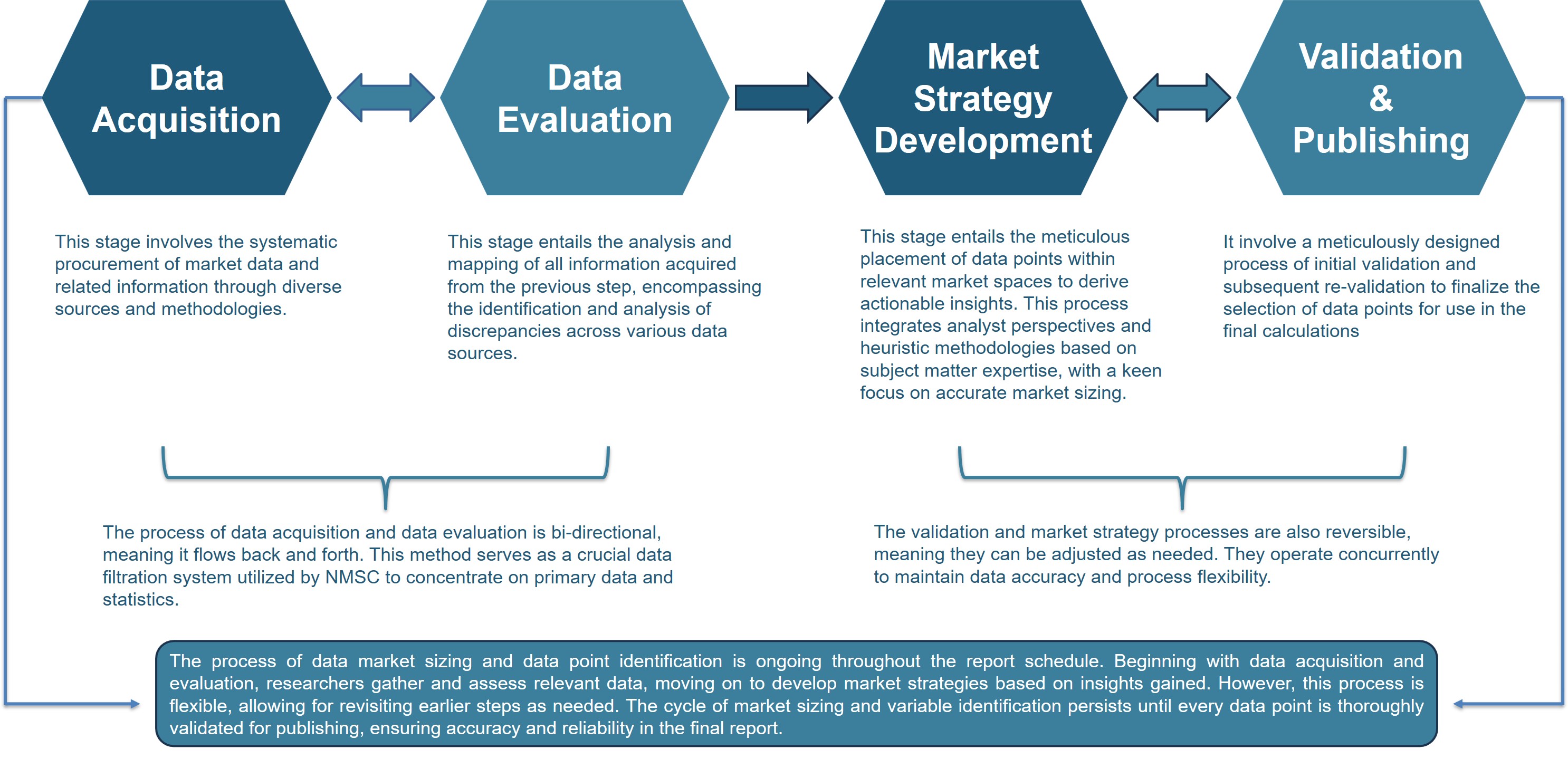




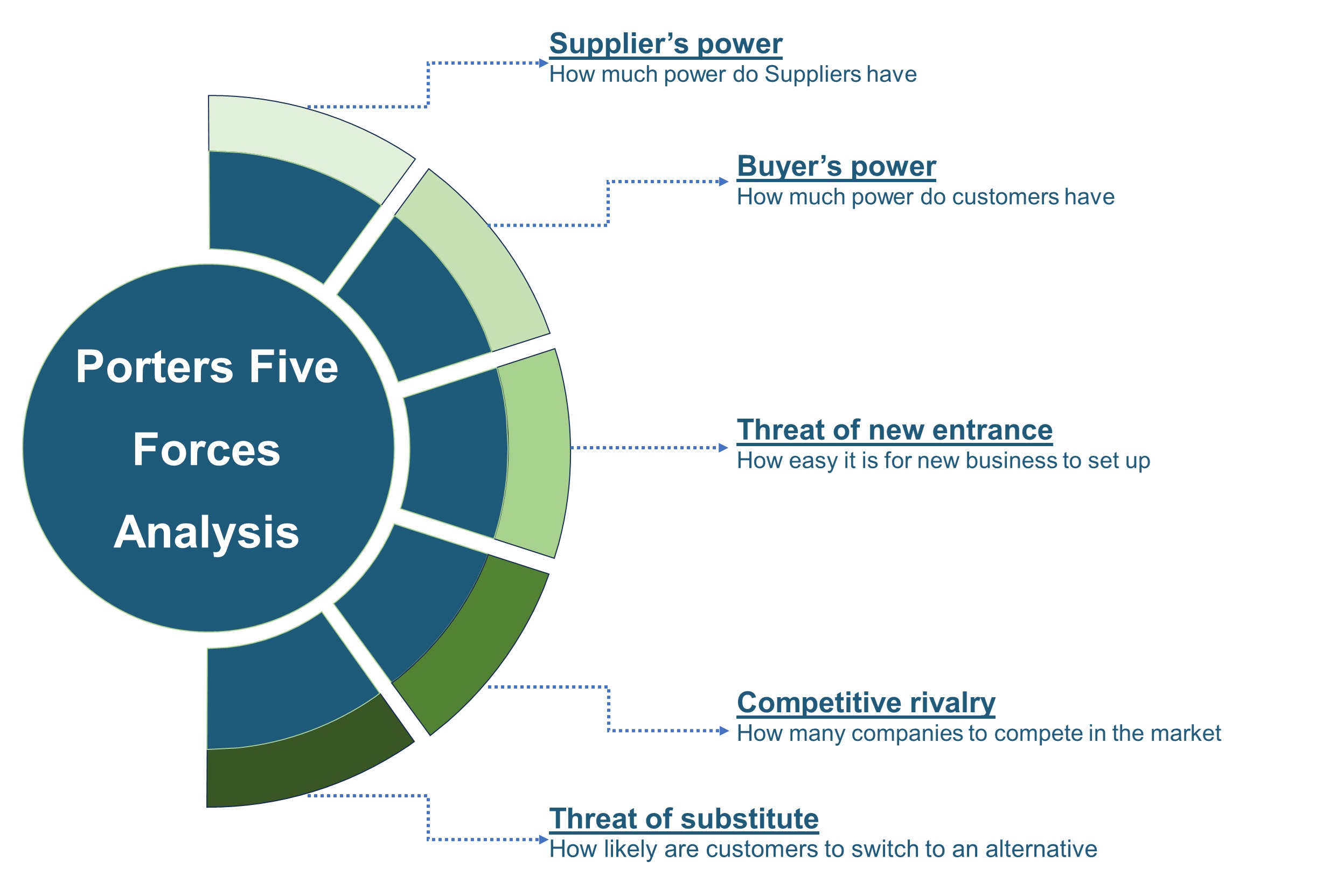







 Speak to Our Analyst
Speak to Our Analyst



